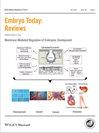下载PDF
{"title":"作为梯度组织的骨软骨界面:从再生医学梯度支架的发展到制造","authors":"Andrea Di Luca, Clemens Van Blitterswijk, Lorenzo Moroni","doi":"10.1002/bdrc.21092","DOIUrl":null,"url":null,"abstract":"<p>The osteochondral (OC) interface is not only the interface between two tissues, but also the evolution of hard and stiff bone tissue to the softer and viscoelastic articular cartilage covering the joint surface. To generate a smooth transition between two tissues with such differences in many of their characteristics, several gradients are recognizable when moving from the bone side to the joint surface. It is, therefore, necessary to implement such gradients in the design of scaffolds to regenerate the OC interface, so to mimic the anatomical, biological, and physicochemical properties of bone and cartilage as closely as possible. In the past years, several scaffolds were developed for OC regeneration: biphasic, triphasic, and multilayered scaffolds were used to mimic the compartmental nature of this tissue. The structure of these scaffolds presented gradients in mechanical, physicochemical, or biological properties. The use of gradient scaffolds with already differentiated or progenitor cells has been recently proposed. Some of these approaches have also been translated in clinical trials, yet without the expected satisfactory results, thus suggesting that further efforts in the development of constructs, which can lead to a functional regeneration of the OC interface by presenting gradients more closely resembling its native environment, will be needed in the near future. The aim of this review is to analyze the gradients present in the OC interface from the early stage of embryonic life up to the adult organism, and give an overview of the studies, which involved gradient scaffolds for its regeneration. Birth Defects Research (Part C) 105:34–52, 2015. © 2015 Wiley Periodicals, Inc.</p>","PeriodicalId":55352,"journal":{"name":"Birth Defects Research Part C-Embryo Today-Reviews","volume":"105 1","pages":"34-52"},"PeriodicalIF":0.0000,"publicationDate":"2015-03-16","publicationTypes":"Journal Article","fieldsOfStudy":null,"isOpenAccess":false,"openAccessPdf":"https://sci-hub-pdf.com/10.1002/bdrc.21092","citationCount":"105","resultStr":"{\"title\":\"The osteochondral interface as a gradient tissue: From development to the fabrication of gradient scaffolds for regenerative medicine\",\"authors\":\"Andrea Di Luca, Clemens Van Blitterswijk, Lorenzo Moroni\",\"doi\":\"10.1002/bdrc.21092\",\"DOIUrl\":null,\"url\":null,\"abstract\":\"<p>The osteochondral (OC) interface is not only the interface between two tissues, but also the evolution of hard and stiff bone tissue to the softer and viscoelastic articular cartilage covering the joint surface. To generate a smooth transition between two tissues with such differences in many of their characteristics, several gradients are recognizable when moving from the bone side to the joint surface. It is, therefore, necessary to implement such gradients in the design of scaffolds to regenerate the OC interface, so to mimic the anatomical, biological, and physicochemical properties of bone and cartilage as closely as possible. In the past years, several scaffolds were developed for OC regeneration: biphasic, triphasic, and multilayered scaffolds were used to mimic the compartmental nature of this tissue. The structure of these scaffolds presented gradients in mechanical, physicochemical, or biological properties. The use of gradient scaffolds with already differentiated or progenitor cells has been recently proposed. Some of these approaches have also been translated in clinical trials, yet without the expected satisfactory results, thus suggesting that further efforts in the development of constructs, which can lead to a functional regeneration of the OC interface by presenting gradients more closely resembling its native environment, will be needed in the near future. The aim of this review is to analyze the gradients present in the OC interface from the early stage of embryonic life up to the adult organism, and give an overview of the studies, which involved gradient scaffolds for its regeneration. Birth Defects Research (Part C) 105:34–52, 2015. © 2015 Wiley Periodicals, Inc.</p>\",\"PeriodicalId\":55352,\"journal\":{\"name\":\"Birth Defects Research Part C-Embryo Today-Reviews\",\"volume\":\"105 1\",\"pages\":\"34-52\"},\"PeriodicalIF\":0.0000,\"publicationDate\":\"2015-03-16\",\"publicationTypes\":\"Journal Article\",\"fieldsOfStudy\":null,\"isOpenAccess\":false,\"openAccessPdf\":\"https://sci-hub-pdf.com/10.1002/bdrc.21092\",\"citationCount\":\"105\",\"resultStr\":null,\"platform\":\"Semanticscholar\",\"paperid\":null,\"PeriodicalName\":\"Birth Defects Research Part C-Embryo Today-Reviews\",\"FirstCategoryId\":\"1085\",\"ListUrlMain\":\"https://onlinelibrary.wiley.com/doi/10.1002/bdrc.21092\",\"RegionNum\":0,\"RegionCategory\":null,\"ArticlePicture\":[],\"TitleCN\":null,\"AbstractTextCN\":null,\"PMCID\":null,\"EPubDate\":\"\",\"PubModel\":\"\",\"JCR\":\"Q\",\"JCRName\":\"Medicine\",\"Score\":null,\"Total\":0}","platform":"Semanticscholar","paperid":null,"PeriodicalName":"Birth Defects Research Part C-Embryo Today-Reviews","FirstCategoryId":"1085","ListUrlMain":"https://onlinelibrary.wiley.com/doi/10.1002/bdrc.21092","RegionNum":0,"RegionCategory":null,"ArticlePicture":[],"TitleCN":null,"AbstractTextCN":null,"PMCID":null,"EPubDate":"","PubModel":"","JCR":"Q","JCRName":"Medicine","Score":null,"Total":0}
引用次数: 105
引用
批量引用

 求助内容:
求助内容: 应助结果提醒方式:
应助结果提醒方式:


